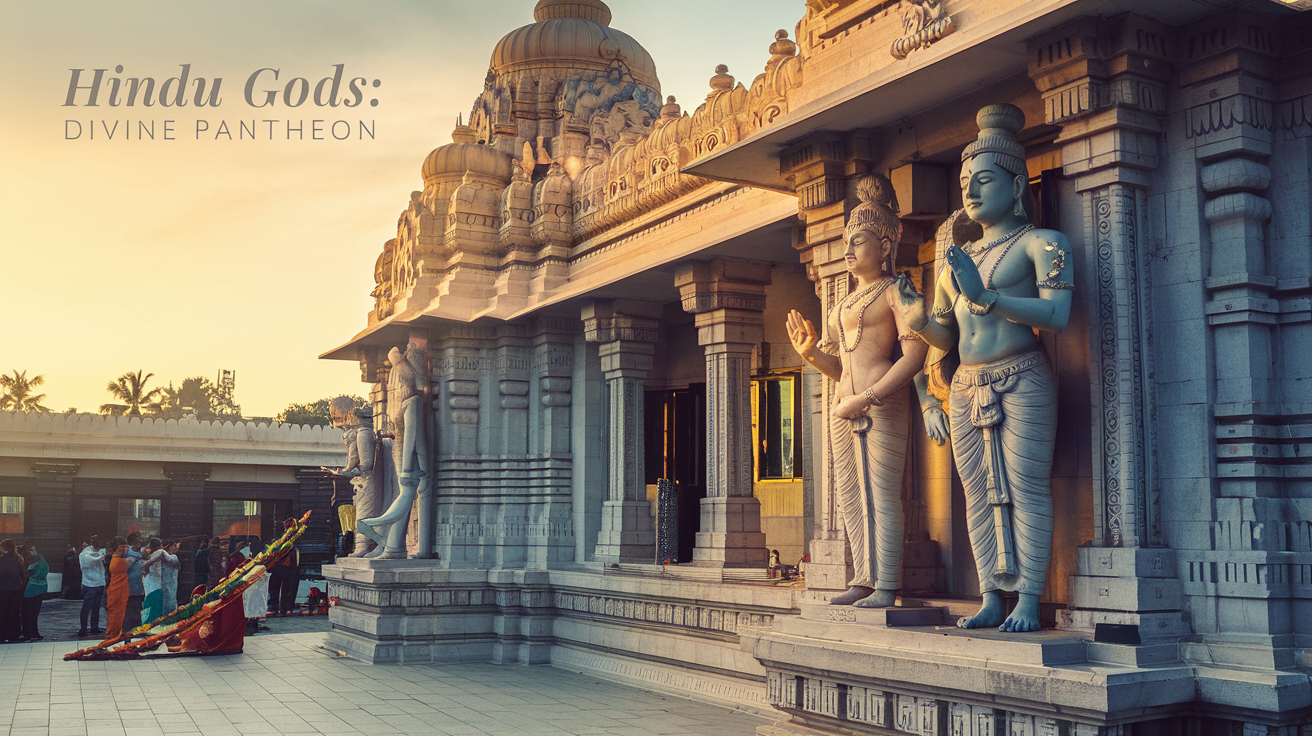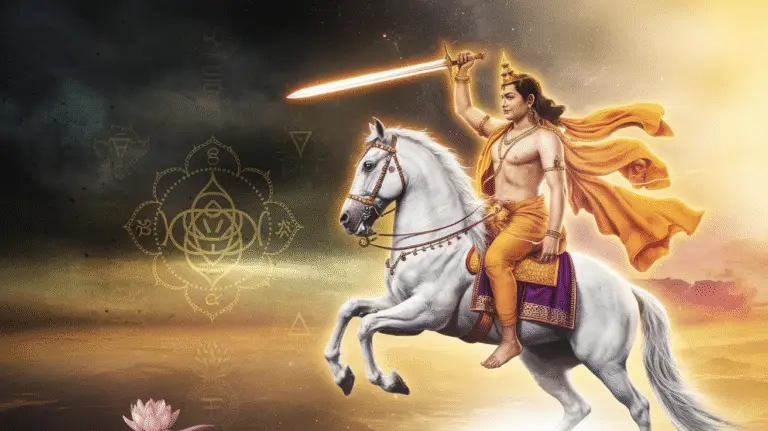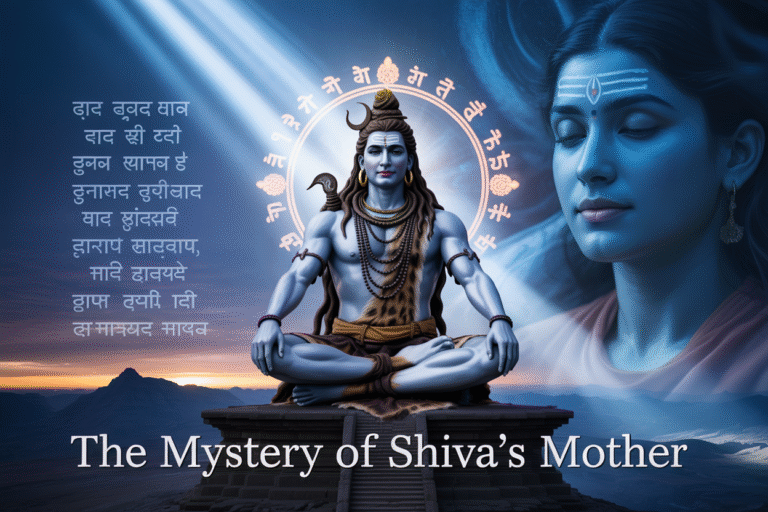The Ultimate Guide to Hindu Gods: Meet the 3 Divine Pantheon
Your Attractive Heading
Have you ever wondered about the vibrant tapestry of deities that color the Hindu religion? 🕉️ From the majestic Brahma, Vishnu, and Shiva to the powerful goddesses and beloved local deities, the Hindu pantheon is a fascinating realm of divine beings that has captivated imaginations for millennia. But with thousands of gods and goddesses, each with their own unique stories and symbolism, it’s easy to feel overwhelmed.
Don’t worry – we’ve got you covered! Whether you’re a curious newcomer or a devoted practitioner looking to deepen your understanding, our ultimate guide to Hindu gods is here to demystify this celestial world. We’ll take you on an enlightening journey through the Hindu pantheon, introducing you to the major deities, their roles in the cosmic dance, and their significance in daily life and worship.
Ready to embark on this spiritual adventure? Let’s dive into the divine realm and meet the incredible cast of characters that make up the Hindu pantheon. From the trimurti of Brahma the Creator, Vishnu the Preserver, and Shiva the Destroyer, to the powerful goddesses and popular deities that shape Hindu culture, we’ll explore it all. So, sit back, relax, and prepare to be amazed by the rich tapestry of Hindu mythology and spirituality! 🙏✨
Understanding the Hindu Pantheon

The concept of multiple deities in Hinduism
Hinduism is renowned for its rich tapestry of deities, each representing different aspects of the divine. This polytheistic approach allows devotees to connect with the divine in various forms, catering to diverse spiritual needs and preferences. The multiplicity of hindu gods in Hinduism reflects the religion’s understanding of the infinite nature of the divine, which cannot be confined to a single form or concept.
The Trimurti: Brahma, Vishnu, and Shiva
At the core of the Hindu pantheon or gods lies the Trimurti, a trinity of supreme deities:
| Deity | Role | Symbolism |
|---|---|---|
| Brahma | Creator | Birth, beginning, knowledge |
| Vishnu | Preserver | Sustenance, balance, protection |
| Shiva | Destroyer | Transformation, renewal, dance |
The Trimurti represents the cosmic functions of creation, preservation, and destruction, embodying the cyclical nature of existence in Hindu philosophy.
Major gods and goddesses
Beyond the Trimurti, Hinduism features numerous major deities, each with distinct attributes and followings:
- Ganesha: Remover of obstacles
- Krishna: Divine love and wisdom
- Hanuman: Devotion and strength
- Lakshmi: Wealth and prosperity
- Saraswati: Knowledge and arts
- Durga: Divine mother and protector
These deities often have multiple forms and avatars, further enriching Hindu godsmythology and worship practices.
Lesser-known deities and their roles
• Vayu: God of wind
• Surya: Sun god
• Agni: Fire god
• Varuna: God of water and celestial ocean
• Kubera: God of wealth
These lesser-known deities play crucial roles in specific aspects of life and nature, demonstrating the intricate web of divine forces in Hindu cosmology. Their presence in mythology and rituals underscores the depth and complexity of the Hindu pantheon.
Brahma: The Creator

Origin and symbolism
Brahma, the creator god in the Hindu Trimurti, is often depicted with four heads and four arms. This unique iconography symbolizes his omniscience and ability to see in all directions simultaneously. In his hands, Brahma typically holds:
- The Vedas (sacred texts)
- A water pot (kamandalu)
- A rosary (akshamala)
- A lotus flower
These objects represent knowledge, creation, time, and the universe, respectively. Brahma’s vehicle, or vahana, is a swan (hamsa), symbolizing wisdom and discernment.
| Attribute | Symbolism |
|---|---|
| Four heads | Omniscience |
| Four arms | Omnipotence |
| Vedas | Knowledge |
| Water pot | Creation |
| Rosary | Time |
| Lotus | Universe |
| Swan | Wisdom |
Brahma’s consort: Saraswati
Saraswati, the goddess of knowledge, music, and arts, is Brahma’s consort. She complements Brahma’s role as the creator by embodying wisdom and creativity. Saraswati is often depicted:
- Wearing white clothes (symbolizing purity)
- Playing a veena (Indian string instrument)
- Holding books and a lotus
Why Brahma is less worshipped
Despite his importance in the Hindu pantheon, Brahma is less commonly worshipped than Vishnu or Shiva. This is attributed to several factors:
- Mythological curses
- Limited role in daily life
- Focus on creation rather than preservation or destruction
The most famous temple dedicated to Brahma is located in Pushkar, Rajasthan. While Brahma may not receive as much direct worship, his influence is still felt through the veneration of Saraswati and the recognition of his role in creation.
Now that we’ve explored Brahma’s role as the creator, let’s turn our attention to Vishnu, the preserver of the universe.
Vishnu: The Preserver
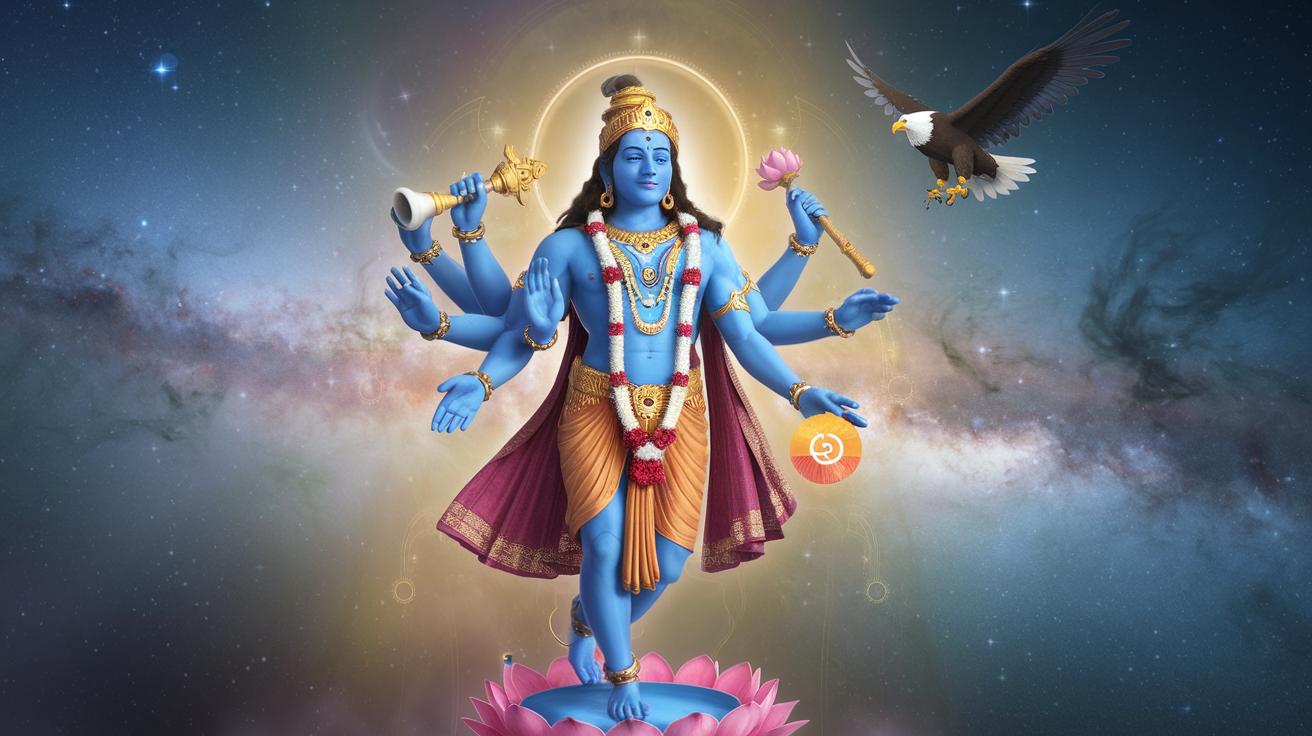
Ten major avatars of Vishnu
Vishnu, known as the Preserver in the Hindu Trinity, is famous for his ten major avatars or incarnations. These avatars, collectively known as Dashavatar, represent Vishnu’s descent to Earth to restore dharma (cosmic order) during different epochs. Here’s a list of the ten avatars in chronological order:
- Matsya (Fish)
- Kurma (Tortoise)
- Varaha (Boar)
- Narasimha (Half-man, half-lion)
- Vamana (Dwarf)
- Parashurama (Warrior with an axe)
- Rama (Prince of Ayodhya)
- Krishna (Cowherd prince)
- Buddha (Enlightened one)
- Kalki (Future avatar)
Vishnu’s symbolism and weapons
Vishnu is often depicted with four arms, each holding a symbolic item:
| Item | Symbolism |
|---|---|
| Conch (Shankha) | Divine sound and creation |
| Discus (Sudarshana Chakra) | Mind and cosmic order |
| Mace (Gada) | Primordial knowledge and strength |
| Lotus (Padma) | Purity and spiritual evolution |
Lakshmi: Goddess of wealth and prosperity
Lakshmi, Vishnu’s consort, is the goddess of wealth, fortune, and prosperity. She is often depicted seated on a lotus flower, symbolizing purity and spiritual power. Lakshmi is worshipped during Diwali, the festival of lights, to bring good fortune and abundance into one’s life.
Popular temples dedicated to Vishnu
Some of the most renowned Vishnu temples include:
- Tirumala Venkateswara Temple, Andhra Pradesh
- Srirangam Temple, Tamil Nadu
- Jagannath Temple, Odisha
- Padmanabhaswamy Temple, Kerala
These temples attract millions of devotees annually, showcasing the enduring popularity of Vishnu worship in Hinduism. As we explore further, we’ll delve into the fascinating world of Shiva, the Destroyer, and his role in the Hindu pantheon.
Shiva: The Destroyer

Shiva’s various forms and manifestations
Shiva, the Destroyer in the Hindu Trimurti, is known for his multifaceted nature. His forms range from the fierce to the benevolent, each representing different aspects of his divine power. Here are some of Shiva’s most prominent manifestations:
- Nataraja: The Cosmic Dancer
- Ardhanarishvara: Half-male, half-female form
- Bhairava: Fierce manifestation
- Rudra: Vedic storm god
- Mahayogi: The Great Ascetic
| Form | Symbolism | Iconography |
|---|---|---|
| Nataraja | Cosmic cycles of creation and destruction | Dancing figure within a ring of fire |
| Ardhanarishvara | Unity of masculine and feminine energies | Split body, half male and half female |
| Bhairava | Time and death | Fierce appearance with multiple arms |
| Rudra | Storms and hunt | Archer with bow and arrow |
| Mahayogi | Meditation and spiritual knowledge | Seated in lotus position |
The significance of Shiva’s third eye
Shiva’s third eye, located on his forehead, is a powerful symbol in Hindu mythology. It represents:
- Spiritual wisdom and insight
- Destruction of evil
- Transcendence of duality
When opened, Shiva’s third eye is said to emit flames that can incinerate anything in its path, symbolizing the destruction of ignorance and the revelation of ultimate truth.
Parvati: Shiva’s devoted wife
Parvati, the gentle and nurturing goddess, is Shiva’s eternal consort. Their relationship represents:
- Divine union of masculine and feminine energies
- Perfect balance and harmony in the universe
- The power of devotion and perseverance
Parvati’s unwavering dedication to Shiva serves as an inspiration for devotees, emphasizing the importance of love and commitment in spiritual practice.
The importance of Shiva in yoga and meditation
Shiva is revered as the Adiyogi, or the first yogi, making him central to yoga and meditation practices. His significance in these disciplines includes:
- Embodiment of perfect meditation posture
- Symbol of inner transformation
- Guide for spiritual seekers
Shiva’s teachings form the foundation of various yogic traditions, emphasizing the importance of self-discipline, concentration, and the pursuit of higher consciousness. His image as the Mahayogi continues to inspire practitioners worldwide in their quest for spiritual enlightenment.
Powerful Goddesses in Hinduism

Durga: The invincible warrior goddess
Durga, the embodiment of divine feminine power, stands as one of Hinduism’s most revered goddesses. Known for her fierce strength and protective nature, Durga is often depicted riding a tiger or lion, wielding multiple weapons in her many arms. Her name itself means “invincible” or “inaccessible,” reflecting her role as a formidable defender against evil forces.
| Attribute | Symbolism |
|---|---|
| Multiple arms | Multitasking abilities |
| Weapons | Protection from various threats |
| Tiger/Lion mount | Power and fearlessness |
Kali: Goddess of time and death
Kali, often misunderstood, represents the eternal cycle of time, creation, and destruction. While her fierce appearance may seem intimidating, Kali embodies the ultimate truth of existence. She is typically portrayed with:
- Blue or black skin, symbolizing the infinite
- A necklace of skulls, representing the cycle of life and death
- A skirt of severed arms, denoting the end of karmic bondage
Kali’s worship focuses on embracing life’s impermanence and seeking liberation from worldly attachments.
Saraswati: Goddess of knowledge and arts
Saraswati, the epitome of wisdom and creativity, is revered as the patron of learning, music, and the arts. Often depicted seated on a white lotus, she embodies purity of knowledge. Saraswati’s iconography includes:
- A veena (stringed instrument), representing the arts
- Books or scriptures, symbolizing knowledge
- A rosary, denoting meditation and spirituality
Devotees seek Saraswati’s blessings for academic success, artistic inspiration, and eloquence in speech. Her presence in Hindu mythology underscores the importance of education and cultural refinement in spiritual growth.
These powerful goddesses exemplify the diverse aspects of feminine divinity in Hinduism, each playing a crucial role in the cosmic balance. Now, let’s explore some of the popular deities and their significance in Hindu tradition.
Popular Deities and Their Significance
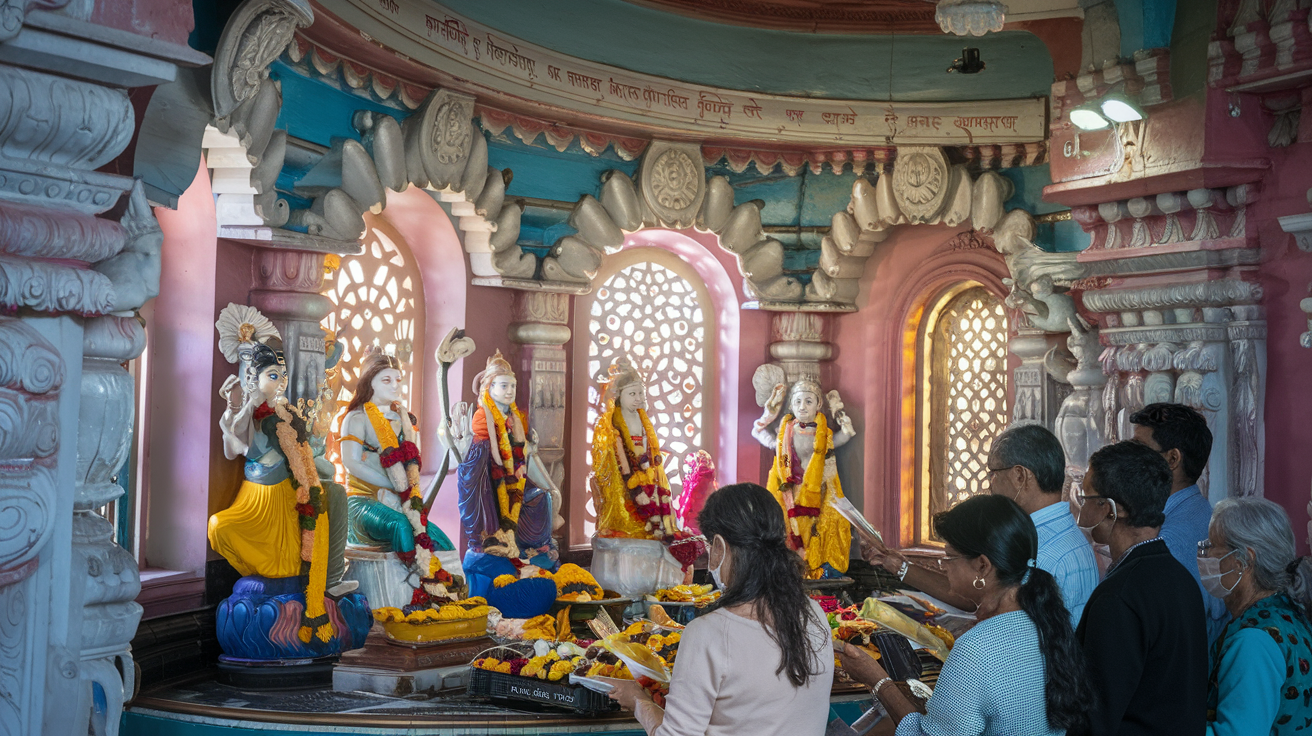
Ganesha: Remover of obstacles
Ganesha, the elephant-headed god, is one of the most beloved deities in Hinduism. Known for his wisdom and ability to remove obstacles, Ganesha is often invoked at the beginning of new ventures. Here’s a quick overview of Ganesha’s key attributes:
| Attribute | Description |
|---|---|
| Appearance | Elephant head, human body |
| Symbol | Om symbol |
| Vehicle | Mouse |
| Associated with | Wisdom, success, new beginnings |
Hanuman: The devoted monkey god
Hanuman exemplifies devotion and strength in Hindu mythology. As a loyal servant to Lord Rama, Hanuman’s unwavering dedication has made him a popular figure of worship. Key aspects of Hanuman include:
- Superhuman strength and ability to fly
- Symbolizes devotion, courage, and selfless service
- Often depicted carrying a mountain, showcasing his legendary strength
Krishna: The divine lover and teacher
Krishna, an avatar of Vishnu, is revered as both a playful cowherd and a wise teacher. His multifaceted personality has captured the hearts of devotees for centuries. Krishna’s significance includes:
- Central figure in the Bhagavad Gita, imparting spiritual wisdom
- Known for his romantic exploits, symbolizing divine love
- Often portrayed playing the flute, a symbol of divine call
Rama: The ideal king and avatar of Vishnu
Rama, another avatar of Vishnu, is celebrated as the epitome of righteousness and ideal governance. His life story, narrated in the epic Ramayana, serves as a moral and ethical guide. Rama’s key attributes include:
- Upholder of dharma (righteous duty)
- Symbol of ideal leadership and moral conduct
- Often depicted with a bow and arrow, representing his warrior skills
These popular deities continue to play a significant role in Hindu worship and cultural practices, each offering unique lessons and blessings to devotees.
Hindu Gods in Daily Life and Worship

A. Choosing a personal deity (Ishta Devata)
In Hinduism, selecting a personal deity, known as Ishta Devata, is a deeply personal and significant aspect of one’s spiritual journey. This choice reflects an individual’s spiritual inclinations and resonance with particular divine attributes. Here’s a guide to help you choose your Ishta Devata:
- Self-reflection: Meditate on your personal values and aspirations
- Study scriptures: Explore sacred texts to understand different deities
- Seek guidance: Consult with spiritual leaders or gurus
- Listen to your intuition: Pay attention to which deity you feel naturally drawn to
| Deity | Associated Qualities | Suitable for |
|---|---|---|
| Ganesha | Wisdom, success | Those seeking knowledge and removing obstacles |
| Lakshmi | Wealth, prosperity | Individuals focused on abundance and material success |
| Saraswati | Knowledge, arts | Students, artists, and intellectuals |
| Hanuman | Devotion, strength | Those seeking courage and unwavering faith |
B. Common prayers and mantras
Prayers and mantras play a crucial role in Hindu worship, serving as powerful tools for connecting with the divine. Here are some widely used prayers and mantras:
- Om Namah Shivaya: A universal mantra for Lord Shiva
- Gayatri Mantra: A sacred verse from the Rigveda
- Hare Krishna Maha Mantra: Associated with Lord Krishna
- Maha Mrityunjaya Mantra: For health and protection
C. Festivals celebrating Hindu gods
Hindu festivals are vibrant celebrations that honor various deities and their divine attributes. Some major festivals include:
- Diwali: Festival of lights honoring Lakshmi and Rama’s return
- Navaratri: Nine nights celebrating the Divine Mother
- Janmashtami: Krishna’s birthday celebration
- Maha Shivratri: Night dedicated to Lord Shiva
D. Incorporating deity worship in home and lifestyle
Integrating deity worship into daily life creates a sacred atmosphere and strengthens one’s spiritual connection. Consider these practices:
- Create a home altar with deity images or statues
- Offer daily prayers or perform puja rituals
- Chant mantras during meditation or while commuting
- Observe fasting or dietary restrictions on specific days
- Participate in community worship at local temples
By embracing these aspects of Hindu worship, devotees can cultivate a deeper connection with their chosen deities and experience the profound spiritual benefits of this ancient tradition.
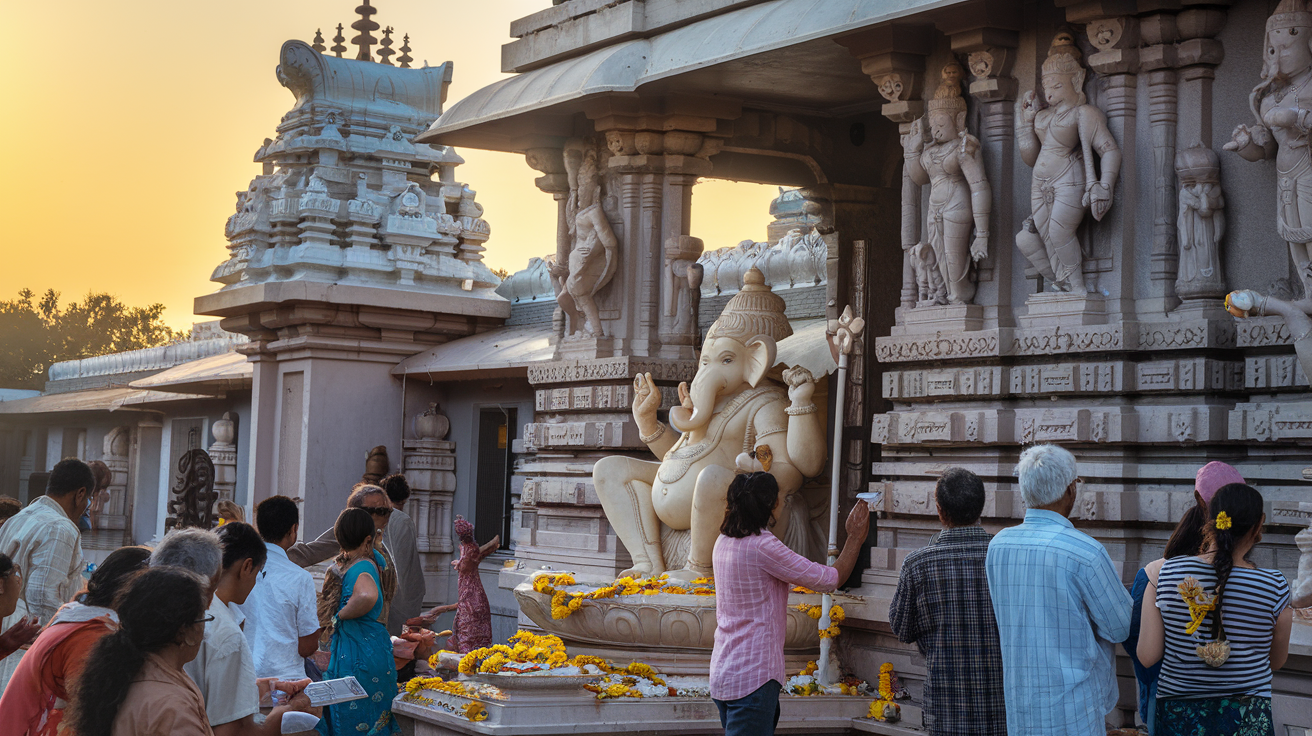
The Hindu pantheon is a rich tapestry of divine beings, each with unique roles and significance in the cosmic order. From the triumvirate of Brahma, Vishnu, and Shiva to the powerful goddesses and popular deities, these divine figures shape the spiritual landscape of Hinduism. Their stories and symbolism offer profound insights into life, nature, and the human experience.
As we’ve explored in this guide, Hindu gods are not distant entities but integral parts of daily life and worship for millions of devotees. Whether through festivals, rituals, or personal devotion, these deities continue to inspire and guide believers on their spiritual journey. By understanding the diverse aspects of the Hindu pantheon, we gain a deeper appreciation for the complexity and beauty of this ancient religion.

